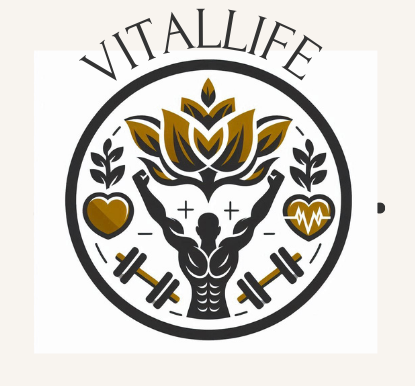
I’m going to start with laying the groundwork to understand the beast we often face: anxiety. You’re going to find out about how this common affliction can pull the reins on our lives. It’s not just the occasional worry over finances or relationships; it’s that continuous feeling of unease or dread that can consume our day-to-day existence.
Now, you might be wondering how meditation fits into this. It’s a tool; think of it as a sort of mental workout that strengthens the brain’s ability to manage stress and anxiety. Studies have shown that regular meditation can lead to changes in the brain associated with decreased anxiety. That’s a point backed by a myriad of health experts and psychologists who advocate for its use as a complementary therapy.
In my opinion, it’s crucial to gather insights from professionals who have studied the connections between meditation and its benefits for anxiety. I’m here to help you understand that meditation isn’t a quick fix, but a practiced art that can make a substantial difference over time. By the end of this section, you’ll have a solid understanding of why meditation could be a significant player in your battle against anxiety.
So what comes next after grasping the interplay between anxiety and meditation? It’s setting the stage for your first steps into meditation practices. I’m going to guide you through beginner-friendly techniques that are as simple as they are effective. They’re the building blocks for a calmer mind and a less anxious life.
Getting Started: Simple Meditation Techniques for Beginners
You’re probably wondering how to actually meditate, especially if you’re dealing with the swirl of anxiety. Don’t worry too much about getting it perfect; meditation is a personal journey, and you can adjust your approach down the road.
Creating the right environment is key. Choose a quiet spot where you won’t be disturbed. This could be a corner of your bedroom, a comfortable chair, or even a spot in a local park. Establish a routine time for practicing meditation, whether it’s first thing in the morning, during lunch, or before bed.
Let’s kick things off with breath-focused meditation. Find a comfortable seated position. Close your eyes and take a deep breath. Inhale slowly through your nose, feel your chest and belly rise, and then exhale gently through your mouth or nose. Repeat this for several minutes, focusing solely on your breath. When thoughts arise, acknowledge them and then gently return your focus to your breathing.
Body scan meditation is another incredible tool for grounding yourself. Lie down or sit comfortably and close your eyes. Starting at your toes, mentally scan up through your body, noticing any areas of tension or discomfort. Breathe into these areas, envisioning the tension releasing with each exhale. This can reveal where anxiety manifests in your body and encourages relaxation.
I really hope that you embrace the idea of building a consistent meditation schedule. It’s like strengthening a muscle; regular practice enhances the benefits. If you miss a day, it’s not the end of the world—just pick up where you left off. Remind yourself why you started and the calm you’re creating within
Choose something that resonates with you; there’s no one-size-fits-all in meditation. And that’s the strategy I like to leverage – making meditation work for me, not the other way around. Now, if you’re ready to deepen your practice even further, you’ll find the next steps in advanced meditation techniques especially intriguing.
Advanced Meditation Practices to Deepen Anxiety Relief
I’m going to guide you through the transition from the basics to more advanced meditation techniques. You’re going to find out about practices that can offer you a deeper sense of relief from anxiety.
Mindfulness meditation is a game-changer for many. It’s not just about quieting the mind; it’s also about becoming an observer of your thoughts without judgment. This can diminish the power of anxious thoughts, disrupting the anxiety cycle.
Guided visualizations are another powerful tool. Choose something that resonates with you – perhaps a peaceful scenario like a quiet beach or a serene forest. This process invites your mind to shift focus from anxiety to calmness.
Now what about incorporating something a bit more dynamic? Yoga and mindful movement blend the benefits of meditation with physical activity. That’s the strategy I like to leverage when stress levels need a bit of wrangling.
Don’t worry too much about mastering these techniques overnight. Your first attempt doesn’t need to be your last. You can always adjust your approach down the road. Just don’t focus too much on perfection; the journey itself is what’s beneficial.
Sustaining Meditation Practices and Managing Expectations
I’m here to help you understand that integrating meditation into your life is a journey, not a sprint. It’s crucial to set realistic expectations about what meditation can do for your anxiety. Don’t expect instant miracles; instead, look for gradual improvements in your well-being.
If you find yourself struggling with anxiety despite regular meditation, it’s perfectly okay to seek professional help. Meditation is incredibly powerful, but sometimes combining it with therapy or medication is necessary for the best results.
It’s heartwarming to hear personal stories of how meditation has transformed lives. These narratives can be inspiring, but remember that everyone’s experience is unique. Your own path may look different, and that’s perfectly fine.
Luckily, a multitude of resources are readily available online, from meditation apps to virtual communities. Choose something that resonates with you and offers the level of support you need. Remember, the goal is to find balance and peace within your mind, and that is a profoundly personal mission.
